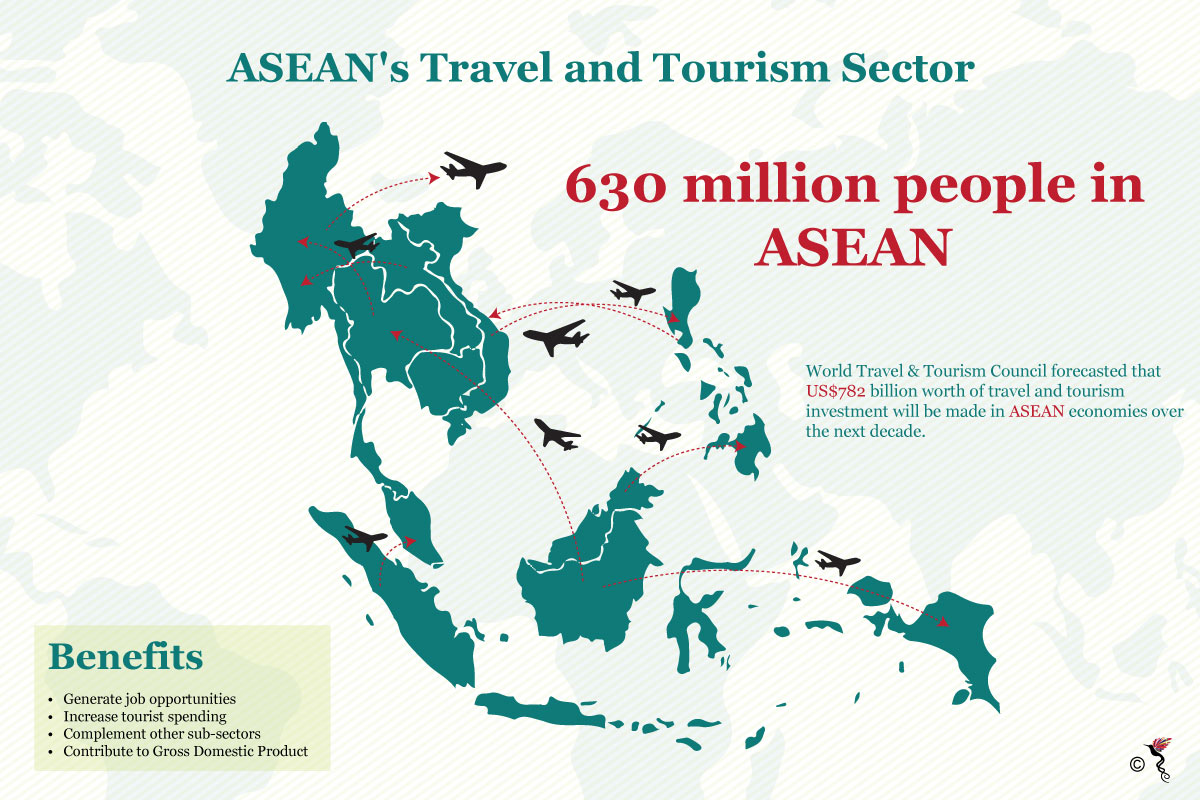Southeast Asia is a highly sought-after holiday destination for tourists and travellers from all across the world. The region, which is home to more than 630 million people, is geographically situated in the heart of Asia. Due to its tropical climate, the region is typically warm and humid all year round with plentiful rainfall. Southeast Asian countries are also known for its unique and diverse cultures as well as natural wonders like sandy beaches, mountains and wildlife.
However, the region as a whole needs to develop its infrastructures to cater to the increase in tourist arrivals. The WTTC (World Travel & Tourism Council) forecasted that there will be 782 billion dollars worth of travel and tourism investment made in ASEAN (Association of Southeast Asian Nations) economies over the next decade – which is nearly 10 percent of total cumulative world infrastructure spending for the sector. The sector forecasted to achieve an average travel and tourism GDP (gross domestic product) growth rate of 6.2 percent for each year leading up to 2026. However, there is a divergence across the ASEAN economies in their ability to deliver the infrastructure needed to meet future demands of tourists and the tourism sector.
As a result, Southeast Asian countries are now placing an emphasis on improving its infrastructures necessary to fulfil tourists needs during their stay in the region, wherever they go. Over the past decade, travel and tourism investments in the ASEAN region were substantially diverted to improving transportation, hospitality services and mobile network services.
Infrastructure development complements travel and tourism sector
The travel and tourism sector plays an important role in contributing to a country’s economic growth, particularly in Southeast Asia. The sector has significant direct and indirect economic impacts such as creating job opportunities, increasing tourist spending while benefiting the restaurant and entertainment sectors. Other sectors that would benefit from this growth include hotels, travel agents, airlines and other passenger transport services.

Benefits of travel and tourism sector to the ASEAN countries.
Professor at the School of Tourism of Leshan Normal University in the Sichuan Province, China, John Koldowski said infrastructure development is critical to spread the flow of travellers to points beyond the gateway cities. Dispersion of travellers is becoming increasingly important as a means of sharing the benefits of responsible tourism across a wider proportion of a country’s resident population. In addition, the longer a traveller spends exploring a country’s more distant assets, the longer they stay which subsequently increases eventual aggregate spent in the country. The time that a tourist spends in the rural areas has a multiplier effect as the money spent by the traveller would circulate through the regional economy several times over. All this is made possible by improving access to infrastructure. It will then stimulate investment in the tourism sector including accommodation, restaurants, entertainment and so on.
“We must not forget digital infrastructure either as today’s travellers are ‘always on-the-go’ and needs to remain connected to the world. In addition, good digital infrastructure can enhance the local residents’ delivery of services and that is always a good thing. Above all of this, it improves the daily life of the resident population through well planned and executed infrastructure development, especially when it is done with a view to achieve responsible and sustainable development,” Koldowski told The ASEAN Post in an email reply.
Koldowski, who is also a special advisor to the Chief Executive Officer of PATA (Pacific Asia Travel Association) Bangkok, Thailand said with a focus on regional connectivity for faster and more efficient delivery of goods and services, it would enhance the movement of travellers. This would then change the focus slightly. From attracting travellers (and investment) into specific ASEAN destinations from foreign countries, governments will instead focus on capturing a share of tourists who are already travelling in the ASEAN region. Increased regional competition is tough but necessary for the continued development of a superlative tourism experience from the perspective of the travellers. In turn, that will position ASEAN in a more positive light compared to other competitors outside of the ASEAN bloc.
Travel and tourism sector continues to thrive in ASEAN
The travel and tourism sector in ASEAN has grown by leaps and bounds. The sector is expected to continue booming driven by low cost air transport, rising middle income earners and growing out-bound tourism markets like China.
